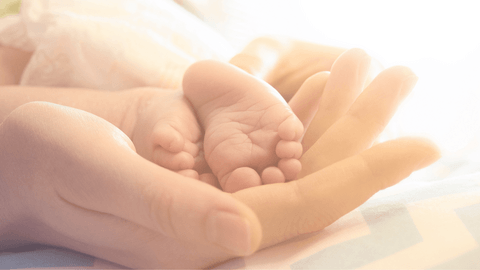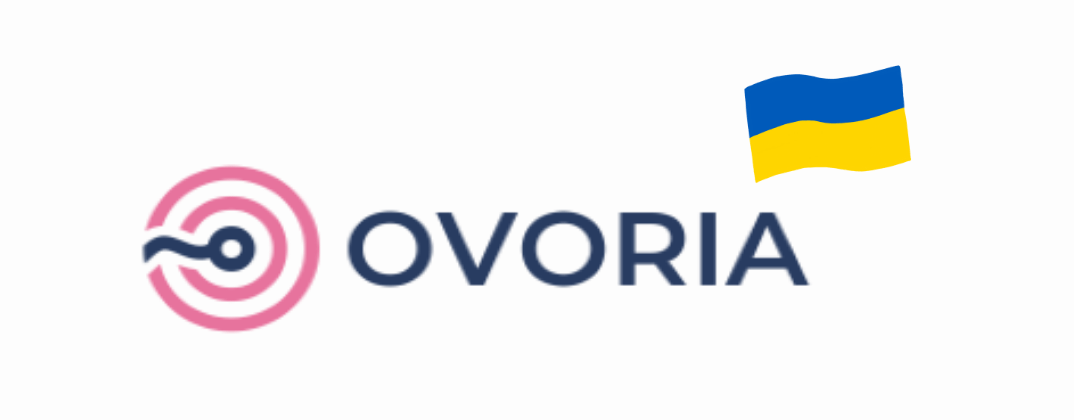Egg Donation: A Comprehensive Guide to Becoming Parents Using Donor Eggs
Nowadays, about 18% of couples cannot conceive, meaning one out of six people have problems with childlessness. 50% of the cases are due to male infertility, and 50% are female infertility. Couples who have been trying to conceive naturally for twelve months and not succeeded are likely to have one infertile individual in the partnership (WHO, 2023), and should thus consider seeking counsel from a fertility clinic.
The trend of increased infertility rates (Mascarenhas et. al. 2012) calls for high-quality fertility treatments, allowing people who are struggling to get pregnant to experience the joy of parenthood. This article delves into the topic of egg donation and provides you with everything you need to know about this form of Assisted Reproductive Technology (ART). Since studies have shown that there is relatively low awareness about egg donation practices (Baykal et al., 2008; Stevens and Hayes, 2010; Straehl et al., 2017), this post will try to provide an understandable, yet comprehensive overview on the topic.

Table of contents
What is Egg Donation?
Egg donation is a medical process in which a woman, known as the donor, provides her eggs to another individual or couple who are unable to conceive using their own eggs. This advanced fertility treatment is often utilized by women with primary ovarian insufficiency (POI), diminished ovarian reserve, or age-related infertility, as well as those with certain genetic conditions. Through the process of in vitro fertilization (IVF), the donated eggs are fertilized with sperm, and the resulting embryos are transferred to the recipient’s uterus. This allows the recipient to experience pregnancy and childbirth while maintaining a genetic connection to their partner. Since its first successful use in 1984 (Lutjen et al., 1984), egg donation has offered hope to countless families, becoming an increasingly common component of assisted reproductive technologies (ART).
When Woman Need Donor Eggs?
1) In case of premature menopause (defined as premature ovarian failure): Women who experience menopause earlier than the average age, often before the age of 40, lose their natural ovarian function prematurely. This condition prevents the production of viable eggs, making egg donation a potential solution for achieving pregnancy.
2) If a woman was diagnosed with reduced ovarian reserve: Some women have a lower-than-normal number or quality of eggs in their ovaries, either due to age or other factors. This can make it difficult to conceive using their own eggs, and donor eggs may be recommended to improve the chances of success.
3) In situations when ovaries were removed or damaged: Surgical removal of the ovaries (e.g., due to cancer or other medical conditions) or ovarian damage caused by chemotherapy, radiation, or other treatments can eliminate the ability to produce eggs. Egg donation offers these women a chance to build their families.
4) If a woman has a genetic or chromosomal abnormality: Women who carry genetic disorders or chromosomal abnormalities that could be passed on to their children may choose to use donor eggs to reduce the risk of transmitting these conditions and ensure a healthy pregnancy.
5)
When there is an inadequate response or no response to previous stimulations: During fertility treatments, some women may not produce a sufficient number of eggs or any eggs at all in response to hormonal stimulation. In such cases, donor eggs can provide a viable alternative to continue the journey toward parenthood.
The Process of Egg Donation
Step 1: Egg Donor Matching
The egg donation process begins with finding the right donor. This involves reviewing profiles of egg donors, which typically include details about their medical history, physical characteristics, and other relevant information. Once a suitable donor is identified and confirmed to be available, the recipient is provided with a list of medical examinations required before moving forward.
Step 2: Ovarian Stimulation for the Donor and Uterine Preparation for the Recipient
The donor undergoes ovarian stimulation, a process where hormone medications are used to encourage the production of multiple eggs for retrieval. At the same time, the recipient prepares for embryo transfer by taking medications like Estradiol Valerate to thicken the uterine lining, creating an optimal environment for implantation. The progress of both parties is closely monitored, often involving regular ultrasound scans and consultations.
Step 3: Egg Retrieval
Once the donor's eggs are ready, they are retrieved in a minimally invasive procedure. These eggs are then fertilized with sperm from the recipient’s partner or a donor in the laboratory. The resulting embryos are cultivated for up to five days to assess their quality and readiness for transfer.
Step 4: Embryo Transfer
After the embryos are prepared, one or more are transferred to the recipient’s uterus. This step can involve fresh sperm samples provided on-site or previously frozen samples. The transfer is a straightforward procedure performed in a clinical setting.
Step 5: Pregnancy Test
About two weeks after the embryo transfer, the recipient undergoes a blood test to measure HCG (human chorionic gonadotropin) levels, a hormone that indicates pregnancy. If the test is positive, follow-up care, including prescribed medications and an ultrasound scan, ensures the pregnancy progresses healthily.
This process is carefully designed to provide a safe and supportive path toward achieving parenthood.
Success Rates of Fertility Treatment with Egg Donation
The success rates of egg donation and IVF procedures vary at each stage and depend on individual patient factors, including age, health, and fertility history. Age, in particular, plays a significant role, with the probability of pregnancy generally decreasing as women get older.
One key stage is the fertilization of donor eggs, which has a high success rate, with approximately 80% of fertilized donor eggs developing into viable embryos. According to data from the Human Fertilisation and Embryology Authority (HFEA), the success rates for IVF pregnancies using fresh embryo transfers are as follows across different age groups:
- Ages 18–34: 41%
- Ages 35–37: 33%
- Ages 38–39: 25%
- Ages 40–42: 16%
- Ages 43–50: 6%
For IVF pregnancies using frozen embryos, the average success rate is slightly lower, around 36%. While these statistics highlight the influence of age and embryo type on outcomes, they also emphasize the importance of tailored treatment plans and expert care to maximize each patient’s chances of success.
Is Egg Donation Painful?
Egg donation is generally not considered a painful process, though some discomfort may occur during certain stages. Donors may experience mild side effects from hormonal medications, such as bloating or mood changes, during ovarian stimulation. The egg retrieval procedure itself is performed under sedation or anesthesia, ensuring it is painless, though some donors report minor cramping or bloating afterward. Recipients undergoing uterine preparation and embryo transfer typically describe these steps as minimally invasive and relatively comfortable. Both donors and recipients are closely monitored to ensure their safety and well-being throughout the process.
Egg Donation in the UK
Egg donation is a vital fertility option in the UK, especially for women unable to conceive with their own eggs due to age or primary ovarian insufficiency. Around 5% of IVF cycles use donor eggs, rising to 18% in women over 40 (HFEA, 2019). Commercial payments are prohibited; instead, donors receive a fixed £985 in expenses. Legislative changes in 2005 also require donor identity disclosure to offspring at age 18 (HFEA, 2005), further limiting donor numbers. Consequently, long waiting lists prompt many patients to seek cross-border reproductive care (Culley et al., 2011). Egg sharing—where a patient donates eggs in exchange for subsidized IVF—offers one solution, yet uptake remains limited despite widespread support.
Why Choose Ovoria Egg Bank?
At Ovoria Egg Bank, science underpins everything we do. We employ top-tier donor traceability systems and adhere to the latest Kitazato recommendations for vitrification and thawing, helping ensure maximum viability of every egg batch. Our extensive screening programs minimize the risk of inheritable diseases, and our fertility experts keep up-to-date with ESHRE and ASRM guidelines to stay aligned with the highest international standards. Patients benefit from a large selection of egg donors, flexible options for
anonymous or open ID donation, and
guaranteed oocytes for each cycle. We also enforce strict family limit controls—tracking live births per donor according to each country’s regulations (UK has a 10-family limit)—to maintain ethical standards. Above all, our commitment to transparent quality assurance and worldwide shipping offers reassurance to patients across the globe, making Ovoria a trusted partner for egg donation treatments.
Get in Touch and Start Your Journey!
Regardless of whether you are looking to become an egg donor, or start your journey toward parenthood - we are here for you! Contact us below, our team is excited to welcome you!
Frequently Asked Questions
What are the legal implications of an egg donation?
Egg donors must be screened through blood tests and medical history. Donated eggs do not need to be quarantined. The Human Fertilisation and Embryology Act 1990 (amended) regulates egg donation in the UK, and the HFEA oversees fertility clinics. Here are some legal consequences in the UK:
Legal Motherhood: According to UK law, a woman who gives birth is always recognized as the legal mother, even if she used a donated egg.
Anonymity: It is no longer possible to donate eggs anonymously in the UK. Once the child turns 18, they can request non-identifying information about their donor from the HFEA.
Compensation: Paying for donations is illegal in the UK. However, egg donors receive £750 per "cycle" as compensation for their expenses.
Donor Screening: Egg donors must undergo blood tests and provide their medical history for screening purposes. Quarantining of donated eggs is not necessary.
What are the possible side effects and risks of egg donation?
Some discomfort may be experienced during the process, including bloating, changes in mood, and increased sensitivity. Rarely, it can also result in Ovarian Hyperstimulation Syndrome (OHSS). Nonetheless, these issues are uncommon and affect fewer than one percent of individuals undergoing the procedure.
How much time will the egg donation cycle demand?
The duration of a cycle can vary based on the particular procedure and facility. Nevertheless, the majority of sources indicate that the process typically lasts approximately 4-6 weeks from beginning to end.
References
Baykal, B., Korkmaz, C., Ceyhan, S. T., Goktolga, U., & Baser, I. (2008). Opinions of infertile Turkish women on gamete donation and gestational surrogacy. Fertility and Sterility, 89(4), 817–822.
Culley, L., Hudson, N., Rapport, F., Blyth, E., Norton, W., & Pacey, A. A. (2011). Crossing borders for fertility treatment: Motivations, destinations and outcomes of UK fertility travellers. Human Reproduction, 26(9), 2373–2381.
Human Fertilisation and Embryology Authority. (2005). Sperm, egg and embryo donation (SEED): Policy review findings of the clinical survey. https://www.hfea.gov.uk
Human Fertilisation and Embryology Authority. (2019). Trends in egg and sperm donation. https://www.hfea.gov.uk/media/2808/trends-in-egg-and-sperm-donation-final.pdf
Human Fertilisation and Embryology Authority. (2020). Trends in egg, sperm and embryo donation: 2020 report. https://www.hfea.gov.uk/about-us/publications/research-and-data/trends-in-egg-sperm-and-embryo-donation-2020/
Lutjen, P., Trounson, A., Leeton, J., Findlay, J., Wood, C., & Renou, P. (1984). The establishment and maintenance of pregnancy using in vitro fertilization and embryo donation in a patient with primary ovarian failure. Nature, 307(5947), 174–175.
Mascarenhas, M. N., Flaxman, S. R., Boerma, T., Vanderpoel, S., & Stevens, G. A. (2012). National, regional, and global trends in infertility prevalence since 1990: A systematic analysis of 277 health surveys. PLoS Medicine, 9(12), Article e1001356. https://doi.org/10.1371/journal.pmed.1001356
Stevens, J. B., & Hayes, C. (2010). Perceptions regarding oocyte donation in a group of female college students. MCN: The American Journal of Maternal/Child Nursing, 35(1), 40–46.
Straehl, J., Lara, L., Sá, M. F. S., Reis, R. M., & Rosa, E. S. A. (2017). What do infertile women think about oocyte reception, oocyte donation, and child adoption? Revista Brasileira de Ginecologia e Obstetrícia, 39(6), 282–287.
World Health Organization. (2023, April 4). 1 in 6 people globally affected by infertility. https://www.who.int/news/item/04-04-2023-1-in-6-people-globally-affected-by-infertility

